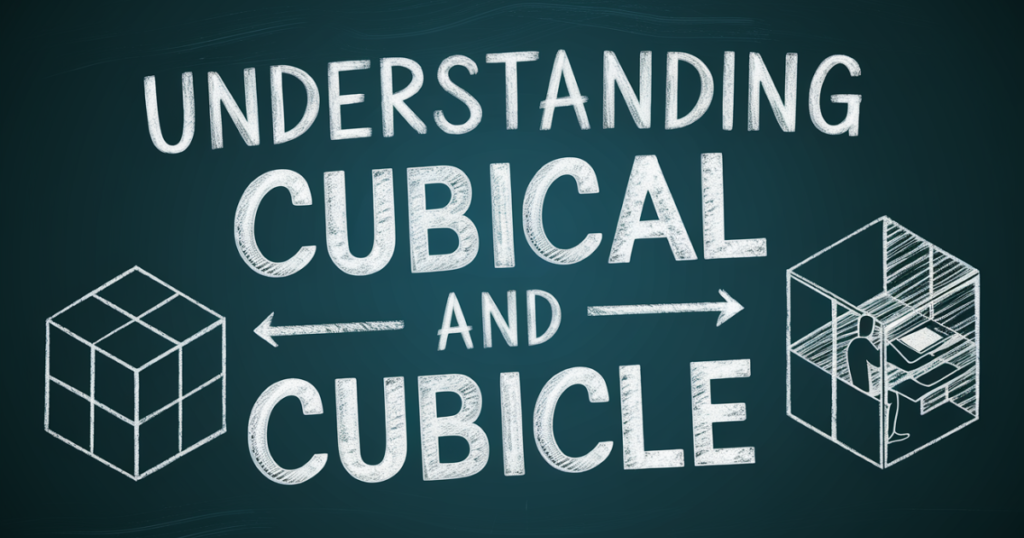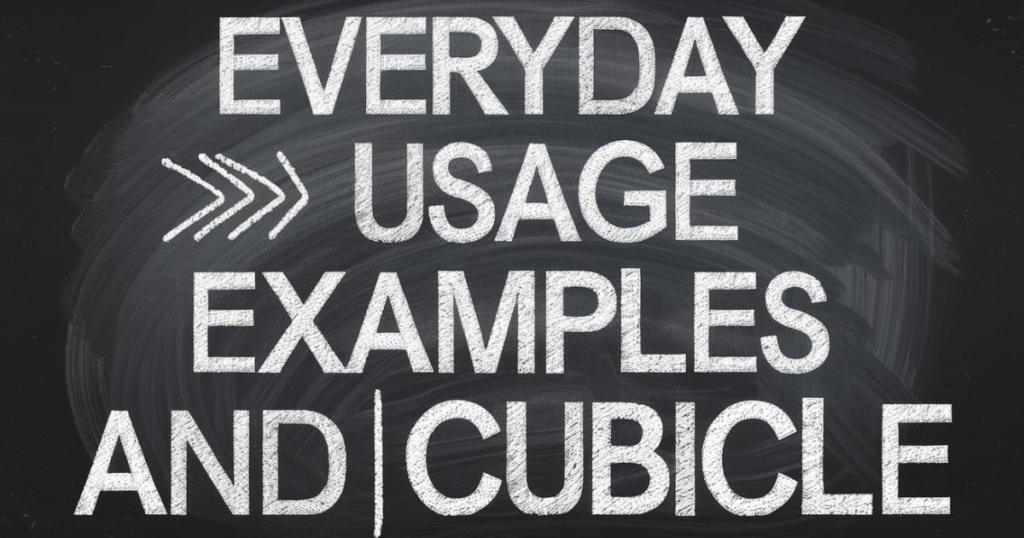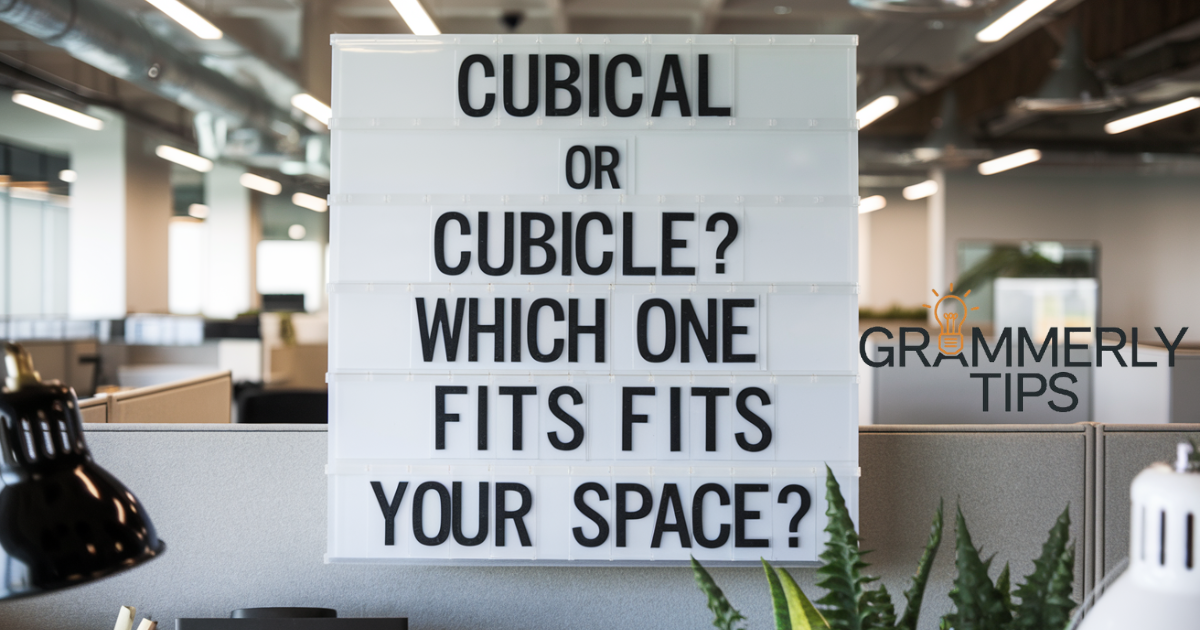When it comes to describing office spaces or geometric shapes, cubical or cubicle often cause confusion due to their similar spelling and sound. While they may seem interchangeable, these words have distinct meanings and applications. Choosing the correct term depends on whether you’re referring to a small workspace or a shape with equal dimensions.
A cubicle is a small, partitioned area within a larger room, commonly used as an individual workstation in offices. In contrast, cubical describes a three-dimensional shape with equal length, width, and height, like a cube. Understanding these differences can help you use the right word when discussing office layouts or geometric concepts.
Understanding Cubical And Cubicle

Cubical: Definition and Usage
Cubical refers to something that has the shape or characteristics of a cube, typically with equal sides, height, and width. It is often used in geometry and architecture to describe objects or structures with a cube-like form.
Examples
- The artist created a cubical sculpture out of metal.
- The warehouse was filled with cubical storage containers.
You Also Like To Read This: Addition Or Edition: Understanding The Key Differences
Cubicle: Definition and Usage
A cubicle is a small, enclosed workspace, typically found in offices, separated by partitions to provide privacy and personal space. It is designed to maximize the use of available space in a shared environment. Cubicles are often used in offices for individual workstations, offering a sense of personal space within a larger open office layout.
Examples
- She works in a cubicle on the 3rd floor of the office building.
- The company redesigned the office, replacing all the old cubicles with more open spaces.
Side-by-Side Comparison
Here’s an updated comparison with the Key Difference included in the table:
| Aspect | Cubical | Cubicle |
| Definition | Refers to a geometric shape with equal sides, typically a cube. | Refers to a small, enclosed workspace in an office. |
| Usage | Used in geometry, architecture, or design. | Used in office settings to describe individual workspaces. |
| Context | Describes a shape or structure with cubic dimensions. | Describes a partitioned work area within a larger room. |
| Example | “The artist created a cubical sculpture.” | “She works in a cubicle on the 3rd floor of the office.” |
| Key Difference | Refers to a geometric object or shape. | Refers to a physical workspace used in an office. |
The terms “cubical” and “cubicle” may seem similar but are used in different contexts. “Cubical” refers to a three-dimensional geometric shape with equal sides, often seen in architecture or design. On the other hand, “cubicle” describes a small, enclosed workspace in an office setting, offering privacy for individual work. The key difference lies in their use: one pertains to geometry, while the other is an office space.
Everyday Usage Examples

Cubical
- The architect designed a cubical structure that fit perfectly into the space.
- The artist displayed a cubical sculpture made from metal and glass at the gallery.
- The furniture in the room was arranged to form a cubical pattern.
- The box had a cubical shape, making it easy to stack with others.
Cubicle
- He spends most of his day working in a small cubicle at the office.
- The office manager assigned a cubicle near the window for better lighting.
- They installed privacy screens to create more personal space in the cubicle.
- The cubicle is decorated with family photos and plants, making it feel more like home.
FAQs
How much space do you need for a cubicle?
The standard size for a cubicle is typically around 6 feet by 6 feet, but it can vary depending on office requirements. Some cubicles may be smaller, while others can be larger with more space for equipment or storage.
Why are cubicles better?
Cubicles provide a balance of privacy and collaboration. They allow employees to have their own space for focused work while still being part of a team environment, often with less noise than open offices.
What is the purpose of cubicles office space?
The main purpose of cubicles is to offer employees personal, private spaces for work while maximizing the use of office space.
What is the difference between a cubicle and an office?
A cubicle is a smaller, enclosed workspace within a larger office area, typically shared with other employees.
Conclusion
In conclusion, cubicles and offices each serve distinct purposes in the workplace. Cubicles offer a balance between privacy and collaboration, creating a more efficient use of space in open-plan offices. They provide employees with a defined personal area while still allowing for teamwork.
On the other hand, private offices offer more space and solitude, catering to those who need greater privacy. Ultimately, the choice between cubicles and offices depends on the company’s needs and the work culture they aim to foster.

Grammerlytips.com, authored by Jame, offers expert tips and insights on mastering grammar, enhancing writing skills, and boosting communication effectiveness.

